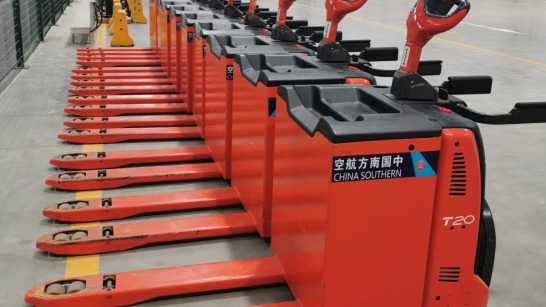1972. No, this is not the year that KION India was launched, but rather it is the number of solar panels that are in place on the roof of the new production facility, and which are helping the management team to realize a 65-percent reduction in energy costs annually. “When we began planning the construction of our new site, we were really looking for energy independence because the supplies of electric energy are quite erratic in India and we realized that using solar energy was the only cost-effective solution to helping reach our goal,” explains Sunil Gupta, the president at KION India.
India currently finds itself in a massive energy transition and over the last four years, it has been remarkable to see how far the Indian renewable energy industry has advanced and that includes KION India joining the trend in late 2019, when it launched its new production site – Factory 2.0 – just outside the city of Pune in the state of Maharashtra
Solar energy strategy: A success on so many levels
“You can build new factories that are efficient in terms of the layout and productivity, but that is not necessarily impressive anymore. However, when you add in measures that make a facility more sustainable, well, that makes customers, vendors and employees stand back and take notice because they see that we are taking this key issue seriously. It is important to everyone on so many levels,” admits Gupta.
“It is a ‘win-win’ for both the government and our business when we take advantage of the net metering system,” he notes, stating that the government placed a strong focus and orientation on increasing solar energy solutions over the last years because they are simply not in a position to meet the industrial competitiveness from a cost perspective using traditional electricity modes.
The brand-new 700 kWp (kilowatt) rooftop solar plant is synchronized with grid power, a diesel generator and an energy storage system and generates automatic reports in real time. At full efficiency, they have calculated a 65-percent reduction in annual energy costs. Add in a significant drop in the number of power cuts, the low maintenance of the photovoltaic system and the built-in safety parameters and you have a management team that was convinced this was the way forward.
“As a leader in our industry, we feel we have a responsibility to our customers, vendors, employees and the communities around us to build a plant that is not only cutting-edge in manufacturing standards, but also one that contributes to improving our environment. These assorted groups are impressed when they see a company of our size aggressively tackling the issue of sustainability in our country,” beams Gupta.

